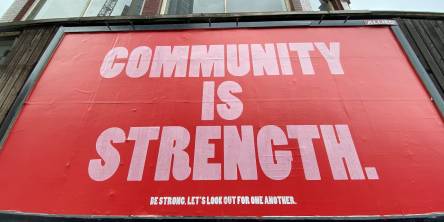Exploring the Benefits of 55 and Older Communities: Finding the Perfect Fit for Your Lifestyle

As baby boomers approach retirement age, the search for comfortable and engaging living arrangements becomes a top priority. For many, maintaining a sense of independence while having opportunities to socialize and stay active is crucial. This trend has led to the rise of 55-and-older communities designed to cater to this age group's unique needs and desires.
These communities aren't just a modern take on traditional retirement homes. They offer a range of amenities, including fitness centers, parks, walking trails, clubhouses, and community gardens. They create an environment where residents can continue to thrive and enjoy their post-retirement years. If you're considering moving into one of these communities, finding the perfect fit for your lifestyle and preferences is essential. Let's explore some critical aspects of finding a 55+ community that meets your needs.
Identifying What You Want in a 55+ Community
Before diving into your search, it's important to consider what you truly want out of your new living situation. This decision goes beyond just selecting a home; it's about finding a community that aligns with your lifestyle, values, and long-term goals.
Ask yourself what kind of daily routine you envision. Are you looking for a bustling, activity-filled environment, or do you prefer something quieter, with more chances for relaxation? Many 55-and-older communities are designed around specific interests. For instance, some focus heavily on fitness and wellness, offering gyms, yoga studios, and swimming pools. If staying physically active is important to you, these types of communities might be a great fit.
On the other hand, if you enjoy cultural activities like art classes, music performances, or theater outings, you'll want to look for communities that prioritize those kinds of events. Many places offer hobby-based groups and clubs, which provide great opportunities to learn something new or connect with like-minded individuals.
It's also important to factor in your current and future healthcare needs. While many active-adult communities are not medical facilities, they often have healthcare resources nearby. Depending on your health or the likelihood of needing regular medical care, it might be worth looking for a community near hospitals or medical specialists.
Finally, consider your financial situation. Many 55+ communities charge fees in addition to the cost of housing. These can cover things like maintenance, amenities, and social events. Make sure to calculate how much you're willing and able to spend each month on both housing and additional community expenses.
The Importance of Location
Location is often one of the most important factors when choosing a place to live, and this is no different when selecting a 55+ community. Consider the climate—do you prefer the warmth of the Southwest or perhaps the changing seasons of the Northeast? Many people choose to relocate to regions where the weather is milder, especially if they plan to spend a lot of time outdoors.
Proximity to the family is another primary consideration. While living in a dream location might sound great, it may not be as enjoyable if it means being far from loved ones. Many retirees prioritize staying close to children, grandchildren, and old friends so they can see them often. Make sure you think about how easy or difficult it would be for you or your family members to visit.
Also, think about the general area surrounding the community. Is it close to shopping centers, restaurants, or entertainment venues? Some people enjoy being near lively towns or cities where they can easily access dining and cultural experiences, while others prefer the peace and quiet of a more rural setting. Be sure to find a community that places you in an environment where you can enjoy your preferred lifestyle.
Doing Your Homework: Researching Communities
Once you've figured out your preferences, you should start the research process. A good place to start is by making a list of your top community options. Consider factors like location, price, amenities, and reputation. A community might look perfect in brochures or online, but it's crucial to gather as much information as possible before making a decision.
Start by visiting each community's website. Many of these sites offer virtual tours, floor plans, and detailed descriptions of the amenities. These online resources can often give you a feel for what life in the community is like, though they may only give you part of the picture.
Review sites and online forums are another helpful resource. Residents often share candid opinions about their experiences in various communities, offering insights that might not be available through official channels. You'll learn about ongoing issues, the overall atmosphere, and what residents love or dislike about the area.
In addition to reading reviews, don't hesitate to contact the community directly. Most are more than willing to answer questions and provide additional details on specific amenities, services, or housing options.
The Importance of Visiting in Person
While researching online is a good starting point, visiting in person's nothing like visiting. Touring the community and seeing its amenities firsthand will give you a much clearer picture of what life there could be like.
Plan to spend a few days in each of your top choices if possible. Some communities even offer "rial stays, "where potential residents can rent a home for a short period. This is a great opportunity to experience daily life in the community, meet residents, and get a feel for the neighborhood's overall vibe.
While visiting, be sure to take note of the upkeep and cleanliness of the common areas. Well-maintained grounds and facilities often reflect a strong management team and attention to detail, which can be important factors for your long-term satisfaction.
Another great way to understand the community is to speak with the residents. People who already live there can give you a firsthand account of their experience, helping you better understand the positives and potential downsides.
Deciding What Feels Right
The decision to move into a 55+ community is personal, and no amount of research can fully prepare you for how a place feels. Even if a community seems perfect on paper, listening to your instincts is essential. If something feels off or you don't feel at ease during your visit, that's worth considering. On the other hand, you may find yourself unexpectedly falling in love with a community that wasn't even high on your initial list.
It's also important to remember that this decision doesn't need to be rushed. Take your time exploring your options and visiting different communities. After all, you're looking for a place that feels like home—a space where you can enjoy your retirement years surrounded by a supportive, like-minded community.
The Journey to Your Ideal Retirement Community
Choosing a 55+ community near you is a significant decision that involves careful thought, planning, and research. From identifying your lifestyle preferences to weighing your financial situation and visiting potential homes, there are many factors to consider.
However, with so many communities catering to different interests and needs, there's likely a perfect fit out there for you. Whether you prioritize fitness and arts or want a friendly neighborhood, there's a community that will feel like home. By taking the time to thoroughly explore your options, you're sure to find the ideal place to begin this exciting new chapter in your life.
Similar Articles
Did you know that approximately 7.3 million individuals received disabled worker insurance from Social Security as of April 2024? Beneficiaries can receive monthly payments that are intended to help cover living expenses while they are unable to work.
Elevate your community app with key features & functions! Follow our step-by-step guide to enhance user engagement and maximize app potential.
At first glance, the humble shipping container might not look like much: just a simple steel box we pack things into for transportation. Take a closer look, however, and you’ll realize that this seemingly modest box has had a profound effect on our world, becoming an integral part of the modern society we currently live in.



